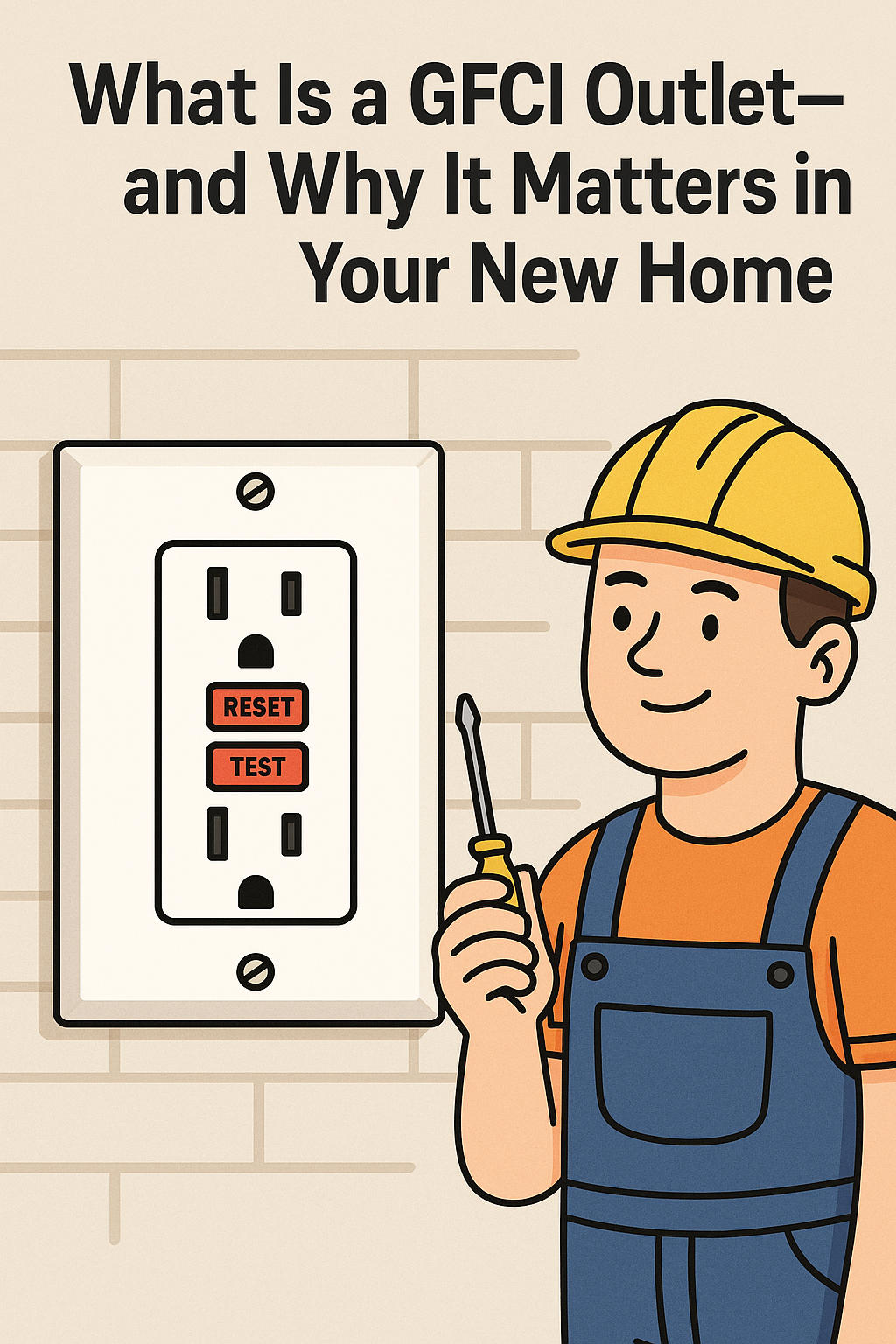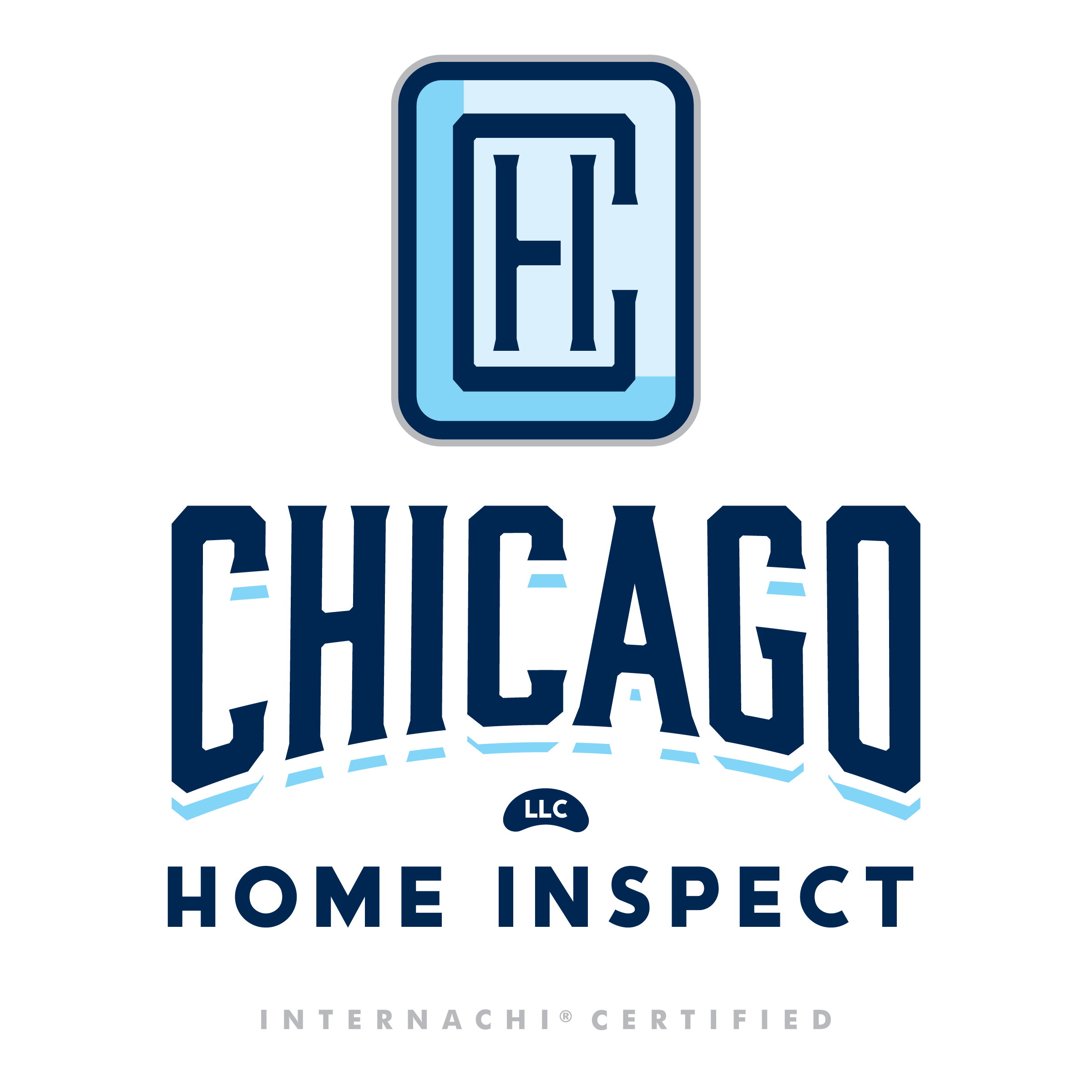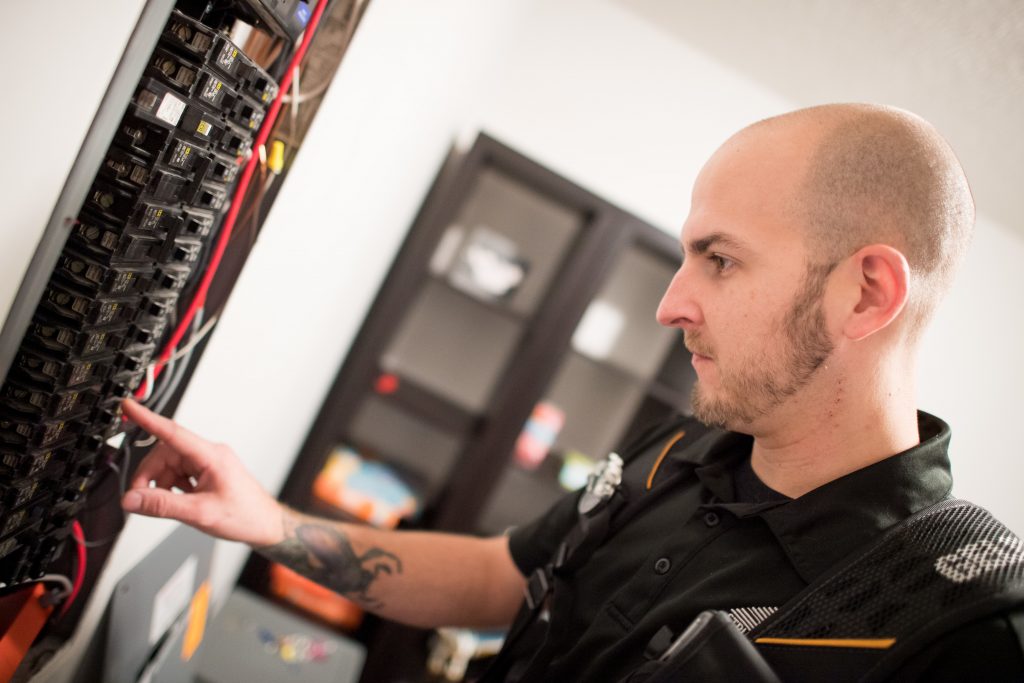
If you’re buying a home, especially in a city like Chicago where properties range from newly built condos to vintage bungalows, you’ll want to pay close attention to a small but crucial detail: GFCI outlets.
You’ve probably seen them — those outlets with the “RESET” and “TEST” buttons — but many people don’t know what they do or why they’re important. In this post, we’ll explain GFCIs in plain English, tell you where they should be installed, and why you should never overlook them during a home inspection.
What Is a GFCI Outlet?
GFCI stands for Ground Fault Circuit Interrupter. These outlets are designed to shut off electric power within milliseconds if they detect even a slight difference in the current flowing in and out — a sign that electricity may be leaking somewhere it shouldn’t.
In simpler terms: GFCIs protect you from electric shock, especially in areas where water and electricity are close together, like kitchens, bathrooms, and laundry rooms.
How GFCI Outlets Work
Electricity always takes the path of least resistance. A GFCI constantly monitors the flow of current through a circuit. If the outlet senses that electricity is flowing through an unintended path — like water, a human body, or wet hands — it shuts the power off immediately.
It doesn’t protect against all electrical problems, but it drastically reduces the risk of electrocution. This is especially important for families with kids, pets, or older homes with outdated wiring.
Where Should GFCIs Be Installed?
According to the National Electrical Code (NEC), GFCI outlets are required in the following areas:
- Bathrooms
- Kitchens (within 6 feet of a sink)
- Garages
- Basements
- Laundry areas
- Outdoor outlets
- Unfinished areas like crawlspaces
- Wet bars or utility sinks
If you’re buying a home and GFCIs are missing in any of these areas, it’s a sign the property might need some electrical updating — or at least a safety check.
Why It Matters in a Home Inspection
During a home inspection, we test every accessible GFCI outlet using a specialized tester or the “TEST” button. We also make sure that they’re installed in the right locations and are working as intended.
Common GFCI-related issues we find in Chicago homes include:
- Missing GFCIs in older kitchens and baths
- Outlets that don’t trip when tested
- Outdated wiring or improper grounding
- Multiple outlets incorrectly wired to a single GFCI
While GFCI upgrades are typically inexpensive, they can indicate bigger electrical concerns — and they’re one of the easiest things to miss if you’re not looking for them.
How to Test a GFCI Outlet
Here’s how you can test it yourself:
- Plug in a small device like a nightlight.
- Press the “TEST” button — the light should turn off.
- Press the “RESET” button — the light should come back on.
If the outlet fails either step, it should be inspected or replaced.
What If the Home Doesn’t Have GFCIs?
If you’re buying an older home in Chicago and there are no GFCI outlets in required areas, don’t panic — it’s a common find. Homes built before the 1970s often didn’t include GFCIs, and many have never been updated.
However, you should factor in the cost of adding them — and use this as a negotiating point during your home purchase. It’s also an opportunity to update other aspects of the home’s electrical system if needed.
Final Thoughts
GFCI outlets may seem like a minor detail, but they play a major role in keeping you safe — especially in homes where water and electricity often meet.
At Chicago Home Inspect, we make sure every GFCI is in the right place and doing its job. It’s just one of the many small things we look for that can have a big impact on your safety, comfort, and peace of mind.
Buying a home in Chicago? Let’s make sure it’s a safe one.



